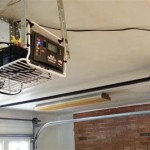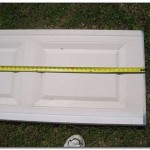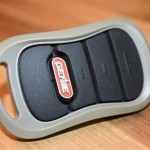Infrared Garage Heater With Thermostat: A Comprehensive Guide
Maintaining a comfortable temperature in a garage during colder months can be essential for various activities, from working on vehicles to pursuing hobbies. Infrared garage heaters with thermostats offer a practical solution for localized and efficient heating. This article delves into the operational principles, advantages, selection criteria, installation guidelines, and safety considerations related to infrared garage heaters equipped with thermostats.
Infrared heaters, unlike convection heaters that warm the air, directly heat objects and surfaces within their range. They achieve this by emitting infrared radiation, a form of electromagnetic radiation on the electromagnetic spectrum. When this radiation comes into contact with a solid object, it's absorbed and transformed into heat. This method of heating is significantly more efficient in open or drafty spaces, such as garages, because it doesn't rely on warming the entire volume of air, which can quickly dissipate.
The inclusion of a thermostat enhances the functionality of an infrared garage heater. A thermostat regulates the heater's output by monitoring the ambient temperature and adjusting the heating element accordingly. This ensures a consistent and comfortable temperature within the garage, preventing overheating and conserving energy. The thermostat enables users to set a desired temperature, and the heater will automatically cycle on and off to maintain that temperature.
Understanding the Mechanics of Infrared Heating
Infrared heating operates on the principle of radiative heat transfer. The heater's element, typically made of a material like quartz, nichrome, or ceramic, is heated electrically. This heated element emits infrared radiation in a specific direction. The intensity and wavelength of the emitted radiation depend on the element's temperature. Surfaces or objects placed within the path of this radiation absorb the energy, causing their molecules to vibrate more rapidly, which manifests as heat. The air itself is minimally heated by the infrared radiation, resulting in a more localized and targeted heating effect.
Different types of infrared heaters utilize different wavelengths of infrared radiation. Short-wave infrared heaters produce intense heat and are suitable for spot heating applications, while medium-wave and long-wave infrared heaters offer a more gradual and even distribution of heat. Garage heaters typically employ medium or long-wave infrared radiation for safety and efficiency.
The efficiency of an infrared heater is determined by its ability to convert electrical energy into infrared radiation. High-quality infrared heaters are designed to minimize energy losses through conduction and convection, maximizing the amount of energy emitted as infrared radiation. Factors such as the reflector design and the type of heating element contribute to the overall efficiency of the heater.
The use of a thermostat in conjunction with an infrared heater further enhances its efficiency. By regulating the heat output based on the ambient temperature, the thermostat prevents the heater from operating unnecessarily, reducing energy consumption and lowering heating costs. The thermostat acts as a feedback mechanism, ensuring that the heater only operates when heating is required.
Benefits of an Infrared Garage Heater With Thermostat
Choosing an infrared garage heater with a thermostat offers several distinct advantages over traditional heating methods. These benefits include improved energy efficiency, targeted heating, enhanced safety, ease of use, and lower maintenance requirements.
Energy Efficiency: Infrared heaters directly heat objects rather than the surrounding air. This reduces energy waste and provides immediate warmth, unlike convection heaters that require time to heat the entire space. The thermostat allows for precise temperature control, further optimizing energy use by preventing overheating.
Targeted Heating: Infrared heaters provide targeted heat to specific areas. This is particularly useful in large garages where heating the entire space is unnecessary. By focusing the heat on the area where work or activity is taking place, users can create a comfortable environment without wasting energy on unoccupied areas.
Enhanced Safety: Infrared heaters often feature safety mechanisms such as overheat protection and tip-over shut-off. These features prevent accidents and ensure safe operation. Because they don't rely on burning fuel, they eliminate the risk of carbon monoxide poisoning associated with some traditional heating systems.
Ease of Use: The integrated thermostat simplifies operation, allowing users to set a desired temperature and forget about it. The heater automatically maintains the set temperature, providing consistent and comfortable warmth. Some models include remote controls for convenient adjustment of settings from a distance.
Lower Maintenance: Infrared heaters typically require minimal maintenance. With no moving parts or complex mechanisms, they are less prone to breakdowns and require less frequent servicing compared to other heating systems. Regular cleaning of the heating element and reflector can help maintain optimal performance.
In addition to these benefits, infrared garage heaters are often portable and easy to install. They can be mounted on walls, ceilings, or tripods, providing flexibility in placement. This versatility makes them suitable for a wide range of garage configurations and applications.
Key Considerations When Selecting an Infrared Garage Heater With Thermostat
Choosing the right infrared garage heater with a thermostat requires careful consideration of several factors. These factors include the size of the garage, the level of insulation, the desired temperature range, the power output of the heater, the thermostat features, and any additional safety features.
Garage Size and Insulation: The size of the garage directly impacts the required heating capacity of the heater. Larger garages require heaters with higher power output to effectively heat the space. The level of insulation in the garage also affects the heating requirements. Well-insulated garages retain heat more effectively, reducing the need for a high-powered heater. Conversely, poorly insulated garages require more powerful heaters to compensate for heat loss.
Desired Temperature Range: Consider the desired temperature range for the garage. Some users may only require a slight increase in temperature to prevent freezing, while others may want to maintain a consistently warm environment. The thermostat should offer a sufficient temperature range to meet these needs.
Power Output: The power output of the heater is measured in watts or BTUs (British Thermal Units). A higher power output indicates a greater heating capacity. Calculate the required power output based on the size of the garage and the desired temperature increase. Consult a heating professional or use online calculators to determine the appropriate power output.
Thermostat Features: Evaluate the features of the thermostat. Digital thermostats offer more precise temperature control and may include programmable settings. Programmable thermostats allow users to set different temperatures for different times of the day, optimizing energy efficiency. Some thermostats also include remote control capabilities for added convenience.
Safety Features: Verify that the heater includes essential safety features such as overheat protection and tip-over shut-off. Overheat protection prevents the heater from overheating and causing a fire hazard. Tip-over shut-off automatically shuts off the heater if it is accidentally knocked over.
Other considerations include the heater's mounting options, warranty period, and overall build quality. Choose a heater from a reputable manufacturer with a solid warranty to ensure long-term reliability.
Ultimately, the selection of an infrared garage heater with a thermostat involves balancing heating performance with energy efficiency, safety, and ease of use. By carefully considering these factors, users can choose a heater that meets their specific needs and provides years of reliable service.
Selecting the right infrared garage heater involves considering the power source, either electric or gas-powered. Electric infrared heaters are generally simpler to install and operate, requiring only a standard electrical outlet. They are also cleaner, producing no emissions. Gas-powered infrared heaters, on the other hand, can provide higher heating output and are suitable for larger garages or workshops. However, they require a gas line connection and proper ventilation to ensure safe operation.
Another important aspect is the mounting options available. Wall-mounted heaters save floor space and provide a more permanent heating solution. Ceiling-mounted heaters offer wider heat distribution and are ideal for garages with high ceilings. Portable heaters provide flexibility, allowing users to move the heater to different areas of the garage as needed. Consider the garage layout and space availability when choosing the appropriate mounting option.
The type of infrared heating element also influences the heater's performance. Quartz heating elements heat up quickly and provide intense heat, while ceramic heating elements offer more sustained and even heat distribution. Incoloy heating elements are durable and resistant to corrosion, making them suitable for harsh garage environments. Evaluate the heating element type based on the desired heating characteristics and the specific requirements of the garage.
Finally, consider the noise level of the heater's operation. Some infrared heaters can produce a humming or buzzing sound, which may be disruptive in quiet environments. Look for models that are designed for quiet operation, especially if the garage is used for activities that require concentration or relaxation.

Optimus 1320 Watt Electric Infrared Garage Shop Ceiling Mount Bladeless Utility Heater 98678933m The Home

Optimus 1320 Watt Electric Infrared Garage Shop Ceiling Mount Bladeless Utility Heater 98678933m The Home

Newair Up To 4800 Watt Infrared Portable Electric Garage Heater With Thermostat Ngh500ga00 At Lowes Com

Newage Products Up To 1500 Watt Infrared Electric Garage Heater With Thermostat 48000 At Lowes Com

Dr Infrared Heater 240 Volt 5600 Watt Electric Portable Garage Workshop Product With Thermostat Dr988 The Home

Heat Storm Tradesman Garage 1 500 Watt Infrared Quartz Portable Heater Hs 1500 Tc The Home

Newage Products Up To 1500 Watt Infrared Electric Garage Heater With Thermostat And Energy Saving Setting 48003 At Lowes Com

Dr Infrared Heater 910f 10000 Watt 240 Volt Heavy Duty Hardwired S Iliving Usa

Heat Storm Electric Infrared Space Heater 15 Sq Ft 5 200 Btu 1 500w Garage And Patio Wall Mounted At Tractor Supply Co

Dr Infrared Heater 910f 10000 Watt 240 Volt Heavy Duty Hardwired S Iliving Usa
See Also








